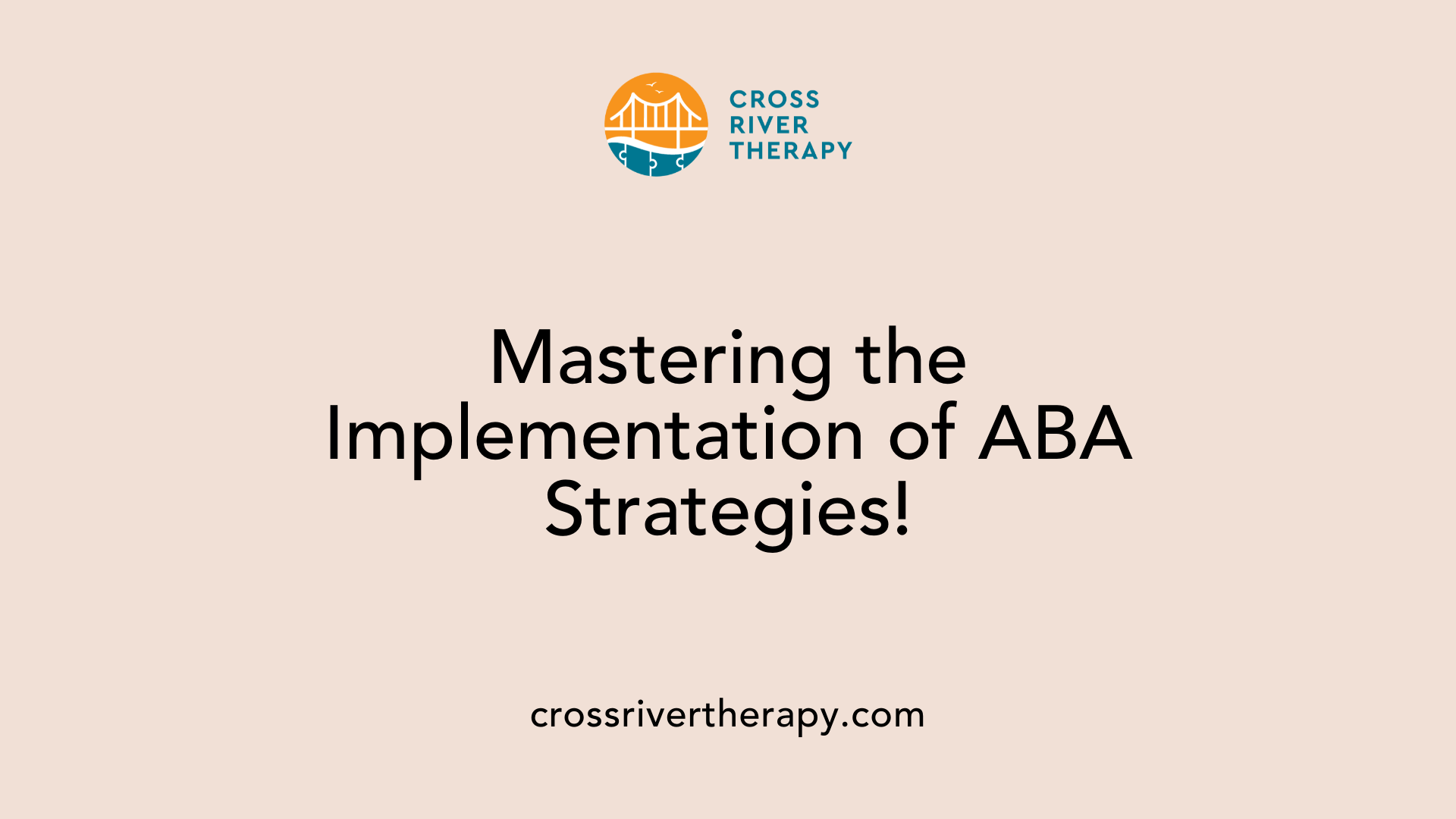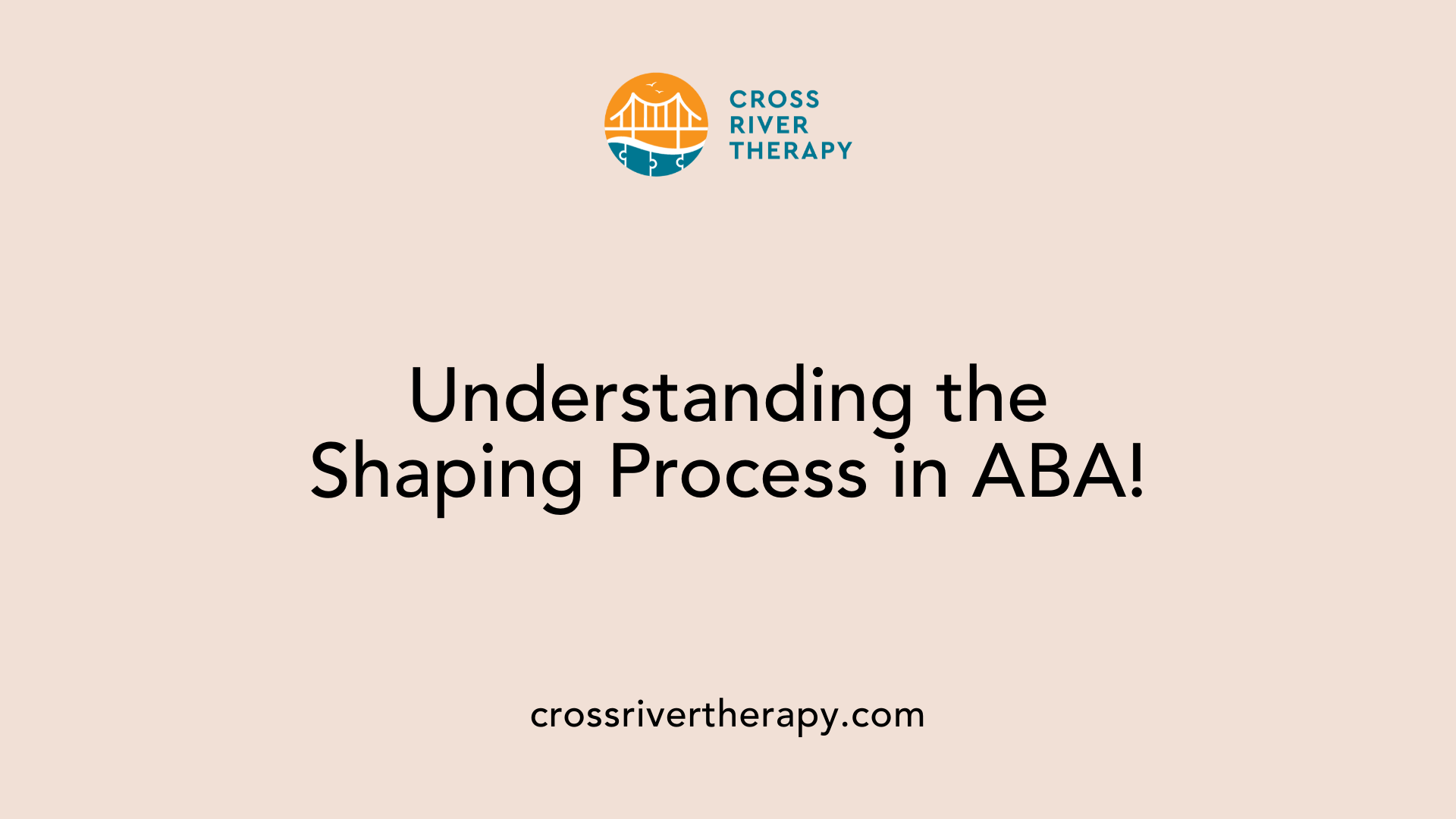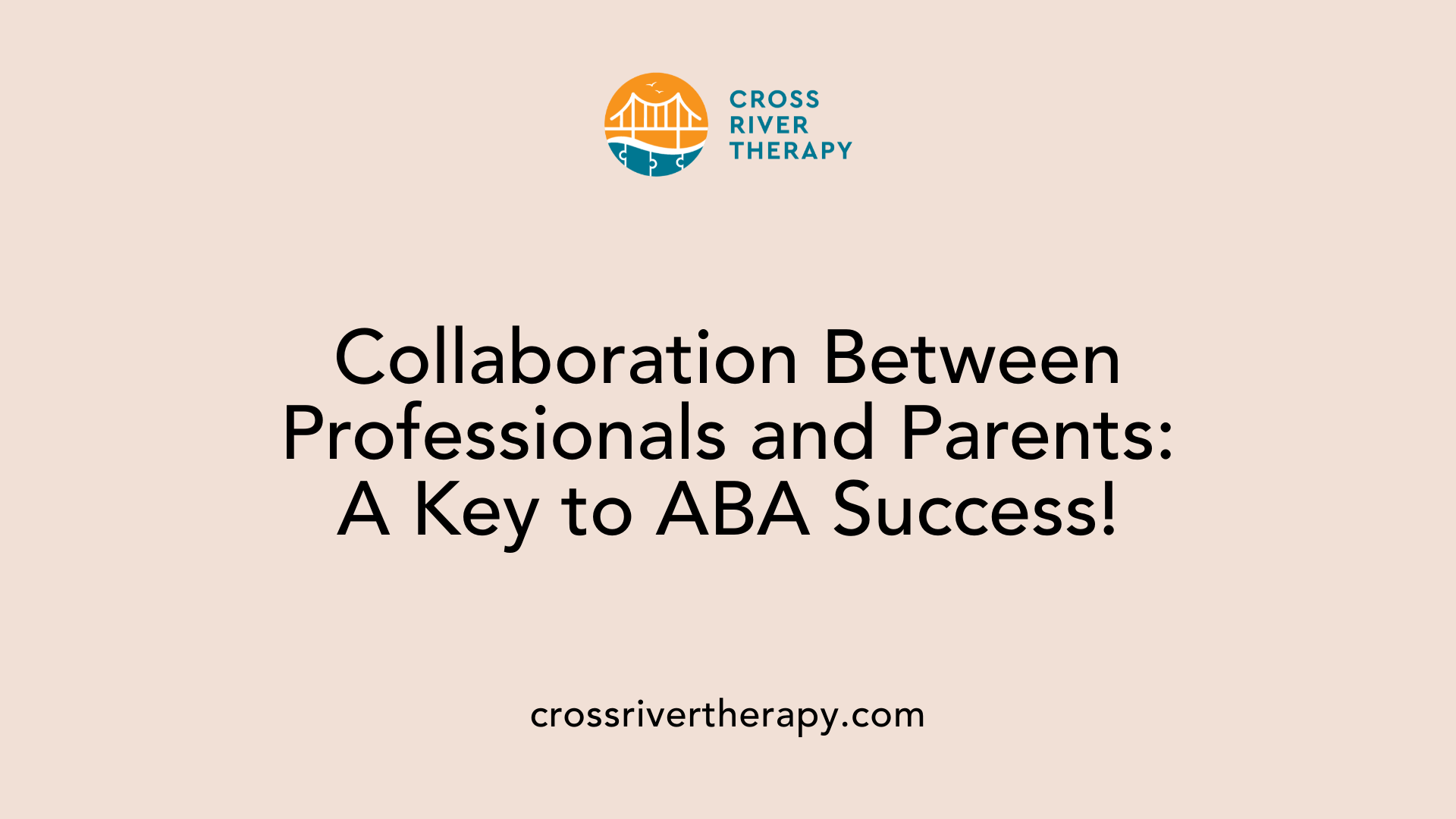How to Implement ABA Techniques
Mastering ABA Strategies for Effective Behavior Intervention
Introduction to ABA Techniques
Applied Behavior Analysis (ABA) is a widely recognized approach for encouraging positive behavioral changes, particularly in individuals with autism. This comprehensive guide will explore key ABA strategies, providing practical insights into their application. Readers will learn to implement these techniques effectively in a variety of settings, ensuring adaptive and meaningful behavioral changes in children and adults alike.
Understanding Key ABA Techniques

What are some key Applied Behavior Analysis (ABA) techniques?
Some key Applied Behavior Analysis (ABA) techniques include:
- Positive Reinforcement: Utilizes rewards to encourage desired behaviors, such as asking for toys instead of grabbing them.
- Discrete Trial Training (DTT): Breaks down skills into small, manageable elements, teaching each part incrementally with reinforcement for correct responses.
- Functional Behavior Assessment (FBA): Identifies the factors influencing behaviors to guide effective interventions.
- Functional Communication Training (FCT): Teaches appropriate communication methods to replace problematic behaviors.
- Modeling: Demonstrates ideal behaviors for imitation, enhancing understanding and learning.
- Prompting/Fading: Involves providing cues to help children learn desired behaviors, followed by gradually reducing those supports.
- Natural Environment Teaching (NET): Focuses on teaching behaviors in real-life settings to enhance generalization.
- Task Analysis: Breaks complex tasks into smaller steps, making them easier for children to learn and achieve.
Application of Positive Reinforcement
Positive reinforcement effectively enhances the learning process. For instance, when a child asks politely for a toy rather than snatching, rewarding them (like giving immediate praise or a small treat) reinforces this positive behavior. This not only increases the likelihood of the behavior happening again but also cultivates an understanding of social norms, effectively improving social interactions and communication skills.
Role of Discrete Trial Training
Discrete Trial Training (DTT) simplifies learning. With a structured method, instructors present information in clear, short trials. For example, a child might be taught to say "thank you" after receiving something in a series of guided practice sessions. Each successful attempt is followed by positive reinforcement, which promotes retention and mastery of the skill over time. DTT is especially useful for children with autism, as it allows for focused, repetitive practice, facilitating quicker learning through systematic instruction.
Effective Implementation of ABA Strategies

How can ABA be effectively implemented?
To effectively implement Applied Behavior Analysis (ABA), it is crucial to develop individualized programs. This starts with crafting tailored treatment plans that focus on specific goals, such as enhancing communication, social skills, or self-care abilities. These programs are designed with the oversight of a Board Certified Behavior Analyst (BCBA).
Individualized ABA programs
Individualization is at the core of effective ABA. Programs need to reflect the unique strengths, challenges, and interests of each child. This customization ensures that interventions are relatable and engaging, promoting the child's active participation and learning.
Role of BCBAs in implementation
BCBAs play a vital role in the implementation of ABA strategies. They conduct Functional Behavior Assessments (FBAs) to pinpoint the underlying causes of challenging behaviors. This assessment guides the development of targeted interventions aimed at addressing specific behavioral issues.
Use of Positive Reinforcement and Functional Assessments
Positive reinforcement is a fundamental aspect of ABA therapy. By rewarding desired behaviors immediately, caregivers can significantly increase the likelihood of these behaviors being repeated. Additionally, consistent data collection is essential, as it informs practitioners about progress and helps in refining intervention strategies. This ongoing monitoring allows adjustments to be made swiftly, enhancing the efficacy of the treatment and supporting the child's behavioral development across various environments.
Unpacking the Shaping Process in ABA

Steps in shaping behaviors
Shaping is an important technique used in Applied Behavior Analysis (ABA) that focuses on reinforcing successive approximations of a desired behavior. Here’s a simple step-by-step breakdown of how to apply shaping:
- Identify the Target Behavior: Choose the behavior you want to teach, such as speech or social skills.
- Establish a Baseline: Observe the child to see their current level of ability regarding the target behavior.
- Break the Behavior Down: Decompose the target behavior into smaller, manageable steps. For example, if the goal is to have the child say full sentences, start with simple sounds.
- Use Positive Reinforcement: Reward the child for achieving each step. This could begin with rewarding any vocalization, then advancing to specific sounds, and eventually to complete words or phrases.
- Monitor Progress: Keep track of successes and adjust the requirements as the child improves.
Practical examples of shaping
Shaping can be effectively used across various scenarios:
- Speech Development: Start by rewarding any utterance, then move to reinforcing specific sounds, and finally encourage full words or phrases.
- Social Skills: Begin with simple interactions like eye contact or smiling and gradually encourage more complex behaviors, such as initiating conversation.
- Self-Care Tasks: If teaching handwashing, first reward turning on the faucet, then lathering hands, and finally completing the entire process.
Importance of reinforcement in shaping
Reinforcement plays a pivotal role in shaping as it encourages the continuation and improvement of behaviors. By immediately rewarding a child after they demonstrate the targeted approximation, you increase the likelihood of that behavior being repeated. Effective reinforcement can be varied, including verbal praise, tokens, or treats, tailored to the child’s preferences. Consistent application in various contexts will further enhance learning, reinforcing the relationship between their actions and positive outcomes.
The Concept of Implementation in ABA
What does implementation mean in the context of ABA?
Implementation in the context of Applied Behavior Analysis (ABA) refers to the practical application of its principles to modify behavior in a systematic way. It encompasses a range of techniques aimed at enhancing skills crucial for daily living. Tools such as task analysis break down complex activities into smaller, manageable parts, while prompting and shaping foster independence and learning.
Significance of data and analysis
Data collection and meticulous analysis play an integral role in ABA implementation. By observing and recording behavior patterns, practitioners can assess the effectiveness of various strategies. This information guides informed decision-making to tailor interventions to better meet the needs of individuals. For instance, using the ABC (Antecedent, Behavior, Consequence) model, behavior analysts can pinpoint triggers and reinforce desired behaviors accurately.
Social significance of targeted behaviors
The focus on socially significant behaviors enables ABA therapy to enhance individuals' quality of life. Interventions are structured around improving essential skills such as communication, social interaction, and daily living activities. This emphasis ensures that the changes made are meaningful and impactful in the individuals' everyday contexts.
| Implementation Component | Description | Impact |
|---|---|---|
| Techniques Used | Techniques like prompting, shaping, task analysis | Enhances learning and skill acquisition |
| Data Collection | Systematic observation and recording behavior | Informs practice and intervention adjustments |
| Socially Significant Behaviors | Focuses on skills that improve quality of life | Increases functional independence and well-being |
Parental Guidance: Applying ABA at Home
Role of parents in ABA
Parents play a pivotal role in the success of ABA therapy by actively engaging in the learning process. Their involvement ensures that techniques are consistently applied in everyday routines, which helps reinforce the skills being taught. Training parents in ABA strategies allows them to implement effective practices at home, significantly enhancing their child's therapeutic progress.
Techniques for home settings
To create a supportive home environment, parents can utilize several ABA techniques:
- Positive Reinforcement: Reward desirable behaviors immediately to promote their recurrence. This can be through praise, stickers, or special privileges.
- Prompting: Use verbal or physical cues to assist children in learning new skills, gradually fading these prompts as the child becomes more independent.
- Task Analysis: Break complex tasks into smaller, manageable steps to make them easier for children to complete independently.
- Modeling: Demonstrate tasks or social interactions for children to observe and imitate, reinforcing their learning of appropriate behaviors.
Visual supports and routines
Employing visual supports, such as picture schedules or checklists, provides structure and aids in routine management. These tools help reduce anxiety by making expectations clear. A consistent daily routine, reinforced with visuals, can help children with autism navigate transitions and daily activities more smoothly. Additionally, implementing a token economy where children can earn tokens for positive behaviors, which can be exchanged for rewards, motivates them to comply with family rules and encourages desired behaviors.
By integrating these strategies at home, parents can effectively support their children's development, ensuring that ABA therapy's principles extend beyond clinical settings into daily life.
Exploring the Antecedent-Behavior-Consequence (ABC) Model
Structure of the ABC model
The ABC model in Applied Behavior Analysis (ABA) comprises three vital components: Antecedent, Behavior, and Consequence. The antecedent refers to the stimuli or events that occur right before a behavior. This could involve different environmental factors or cues that trigger certain actions. The behavior is the individual's response to the antecedent, which can be either desirable or problematic. Lastly, the consequence is the outcome that follows the behavior, which can either reinforce or discourage the behavior in future scenarios.
Applying the ABC analysis
Applying the ABC analysis helps in identifying the triggers of certain behaviors. By observing and recording the antecedents and consequences related to a specific behavior, therapists can gather insights to modify interventions. For instance, if a child reacts negatively when presented with a specific task, understanding the antecedents can help in developing strategies that reduce the likelihood of such reactions.
Data collection and its importance
Data collection is crucial in the context of the ABC model. It enables practitioners to track behavior patterns over time, providing a clearer picture of behavioral trends. By utilizing ABC data sheets, therapists can effectively assess the impact of various interventions, determine which strategies are beneficial, and fine-tune their approaches for improved outcomes. This structured analysis not only facilitates targeted lessons but also enhances the overall effectiveness of ABA therapy.
Generalization: Adapting Skills Across Contexts

Importance of Skill Generalization
Skill generalization is crucial in ABA therapy as it enables children with autism to apply learned behaviors in various contexts. This adaptability ensures that skills are not only useful in a therapy setting but also in daily life, enhancing independence and social interactions.
Techniques for Enhancing Adaptability
Several effective strategies promote skill generalization:
- Natural Environment Teaching (NET): Skills are taught in real-life situations, emphasizing their relevance.
- Pivotal Response Training (PRT): Focuses on pivotal developmental areas, fostering broader learning across multiple contexts.
- Visual Supports: Utilizing aids like schedules helps clarify expectations, enhancing understanding in diverse settings.
Environmental and Personal Stimulus Control
Controlling environmental settings and personal stimuli aids in reinforcing learned behaviors. By modifying triggers in the environment and providing consistent prompts, individuals are better equipped to generalize their skills and maintain positive behaviors in various scenarios.
Enhancing Skills Through Natural Environment Teaching (NET)
Benefits of NET in ABA
Natural Environment Teaching (NET) is an effective approach in Applied Behavior Analysis (ABA) that emphasizes teaching in a child's everyday surroundings. This technique allows children, especially those with autism, to learn skills in real-life contexts, making the learning process more engaging and relevant. By utilizing familiar settings, children can better relate to the skills being taught, leading to improved motivation and retention.
Real-life application of learned skills
NET integrates learning opportunities into daily activities, which helps reinforce skills in situations where they will actually be used. For example, teaching social interactions during playtime or communication skills during mealtime allows children to practice new skills in an authentic environment. This situational learning can improve the likelihood that children will use these skills outside of therapy sessions.
Skill retention and adaptability
Furthermore, the use of NET promotes the generalization of skills across different settings. As children practice learned skills in varied contexts, they become more adaptable and proficient in applying these skills in new situations. This adaptability not only enhances their learning outcomes but also supports their overall development, fostering independence and confidence.
Involving Teachers and Professionals in ABA

Role of Professionals in ABA Programs
Professionals, notably Board Certified Behavior Analysts (BCBAs), play a crucial role in ABA therapy by designing customized intervention strategies based on thorough assessments of children's needs and skills. These professionals ensure that interventions are evidence-based and specifically tailored, helping children with Autism Spectrum Disorder (ASD) achieve significant behavior improvement.
Collaborative Efforts Between Parents and Teachers
Collaboration among parents, teachers, and ABA professionals is vital for consistent implementation of techniques. When parents are trained to apply ABA principles at home, it reinforces what children learn in therapeutic settings. Regular communication ensures that strategies remain consistent across environments, enhancing the child's adaptability and understanding.
Training and Education for Better Outcomes
Ongoing training and education for teachers are essential to effectively implement ABA techniques in classrooms. This training equips educators with the knowledge to recognize behavioral triggers and apply appropriate reinforcement systems. By understanding and utilizing ABA strategies, teachers can create an inclusive classroom environment that supports both academic and social skill development for all students, especially those with ASD.
Conclusion: The Path Forward with ABA
Applied Behavior Analysis (ABA) offers a robust framework for nurturing positive behavior changes and skill development, particularly for individuals with autism. This guide highlights the vitality of implementing these strategies not only by professionals but also by parents and teachers in various environments. By understanding and applying techniques like positive reinforcement, shaping, and natural environment teaching, one can dramatically improve the quality of life for those involved in ABA therapy. Continuous learning and adaptation ensure that ABA remains an effective tool in fostering meaningful change. With commitment and collaboration, the benefits of ABA can be realized to their fullest potential.
References
- Understanding ABA Techniques: 7 Strategies You Need to Know
- ABA Techniques: Strategies for Behavior Analysts - GSEP Blog
- ABA Therapy Examples, Definition & Techniques
- 8 Important ABA Techniques for Kids with Autism - Abacus Therapies
- Comprehensive Guide to ABA Therapy techniques
- How to Use ABA to Manage Challenging Behaviour in the Classroom
- 10 Evidence-Based ABA Therapy Techniques to Consider



